6 Paint Colors That Will Boost Your Mood, According to Experts
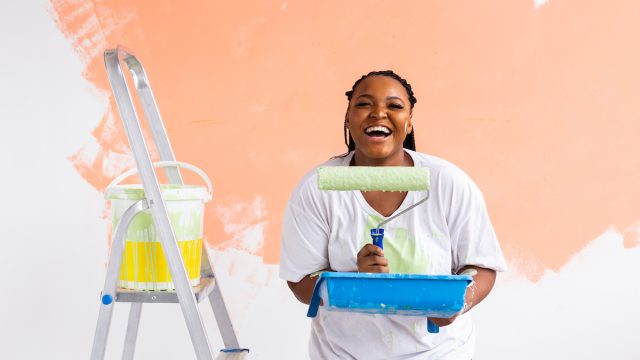
There’s a good chance that your favorite spa is painted a calming blue or green. Likewise, your local bakery may have bubblegum pink walls, and your gym might be accented with bright reds or yellows. This is no accident: Color theory has a lot to do with our feelings and how we perceive our environment, so business owners put a lot of thought in finding just the right shade. And if you’re looking for a little mood boost in your own home, you may simply need to re-paint your walls. Here, color experts and therapists share the paint colors that will make you the happiest. Read on for their top picks.
READ THIS NEXT: The Best Colors to Paint Your Bedroom, According to Sleep Experts.
1
Creamy yellow
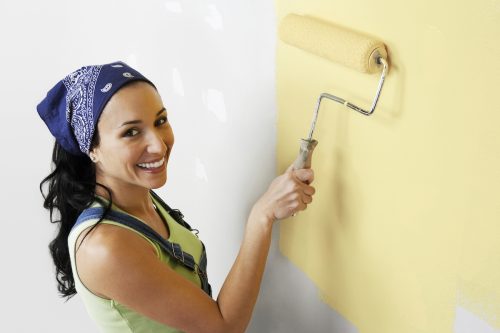
The color of the sun, daffodils, and many a tropical fruit—is it any wonder yellow lands at the top of the list of happy hues?
“Studies show that yellow stimulates the production of the neurotransmitter serotonin, which gives the brain and nervous system feelings of well-being,” explains Lisa Lawless, PhD, CEO of Holistic Wisdom.
Lawless notes that yellow is ideal for social and creative spaces. “This is why it is often seen in kitchens, living rooms, and home offices.”
Amy Wax, color expert and creator of the Color911 app, recommends a creamy yellow paint color, as it’s more soothing than a bright, energizing yellow. “It’s easier on the eyes and more versatile as a color to use in your decor,” she adds.
2
Light blue
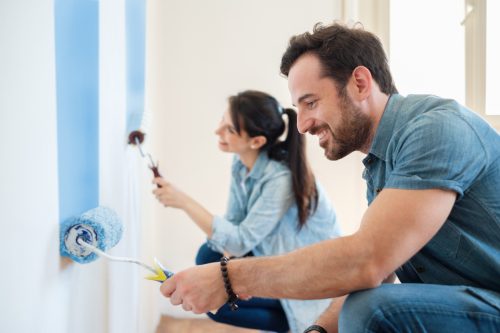
“Blue is the most popular color, and it is because it is associated with the sky and nature,” explains Lawless. “The calming and soothing effects of blues often leave people feeling relaxed.”
Science supports this, too. “Blue has been shown to lower blood pressure and heart rate,” notes Lawless.
Studies also show that wearing blue makes you appear more trustworthy to others, so having it on your walls can only help foster feelings of calmness and openness.
For paint, Wax recommends a light blue. “It can feel refreshing and airy in any room.” If powder blue isn’t your style and you want something a bit more sophisticated, she suggests mixing light blue with a bit of gray.
READ THIS NEXT: The 5 Best Paint Colors to Brighten Low-Light Rooms, Experts Say.
3
Orange
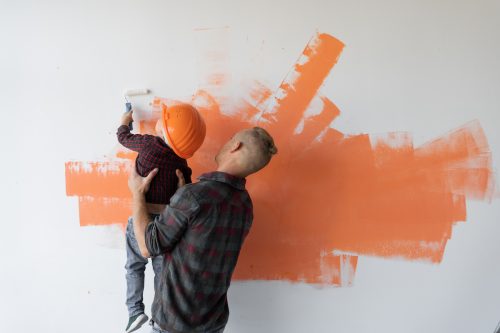
Orange is definitely one of those love-or-hate colors, but all the experts with whom we spoke recommend this upbeat hue for a mood boost.
“Orange is a warm and energizing color ideal for inspiring feelings of optimism,” shares Lawless. “It is often used in kitchens, dining areas, exercise rooms, and creative studios to enhance social interactions and productivity.”
If you want something a bit more toned down for, say, a living room or bedroom, Wax is partial to a rusty orange. “An earth tone that truly glows, it can be paired beautifully with teal blues, neutrals, and chocolate browns.”
4
Earthy green
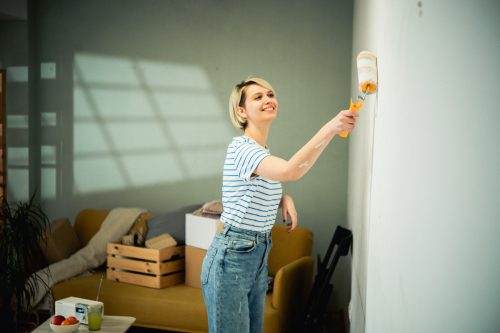
Countless studies show how being in nature is good for your mood and health, so is it any surprise that bringing the color green inside can also trigger happiness?
“It has a calming effect on people and is often used by health-focused companies to convey a sense of health and rejuvenation, such as one often feels during spring when new plants erupt,” explains Lawless.
Michele Goldman, psychologist and Hope for Depression Research Foundation media advisor, adds that green can also be refreshing, stimulating, and beneficial in extending concentration.
Goldman suggests pear green or sage green paint. And Lawless recommends it for bedrooms, living rooms, and home offices “because of the tranquil feeling it can provide.”
For more home advice sent directly to your inbox, sign up for our daily newsletter.
5
Blush pink
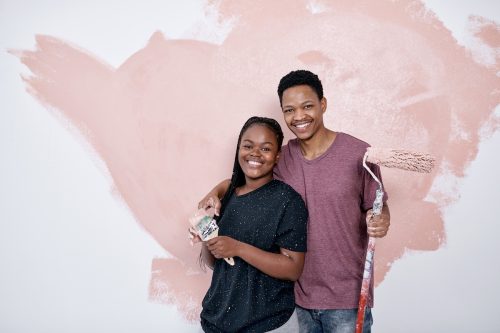
Don’t write pink off as a juvenile, overly feminine hue.
“A soft blush comes with a sweeter touch and can be used alongside almost any color in the color wheel,” explains Wax. “This soothing color is as versatile as an off-white, light gray, or beige.”
Goldman says that pink is associated with hope, empowerment, and motivation.
A pale pink has a calming energy, Goldman adds, but if you want a bit more of an upbeat vibe, she recommends a coral pink paint.
6
White

Yes, sometimes no color at all is the best way to get into a happy mindset.
“White reflects sunlight best, and sunlight is a known mood booster as it provides vitamin D, which is good for the soul and the mood,” explains Perri Shaw Borish, MSS, LCSW, founder and psychotherapist at Whole Heart Maternal Mental Health.
This logic also applies to any light neutral shade or color that’s on the pale end of the spectrum.
Artem Kropovinsky, an interior designer and founder of Arsight, adds that white and light gray “typically signify balance, order, and elegance.” So, if you’re someone who feels happiest when things are neat and serene, simple white walls may be best.
Other factors to consider
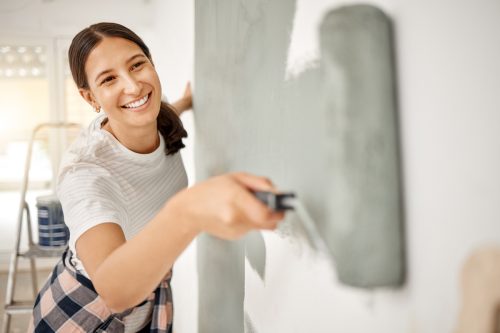
All experts agree that, though there is evidence to support certain colors making you happy, much of color science comes down to your personal relationships with color.
“If people have certain associations with a color, that association is stored in the brain and impacts a person’s mood, whether the association is positive or negative,” explains Goldman. “For example, if an ex broke up with you in their red convertible, you might not have positive associations to paint a room red, even if the color is beautiful and would look amazing in the space.”
Culture, age, and gender can also influence how we respond to colors, Goldman adds.